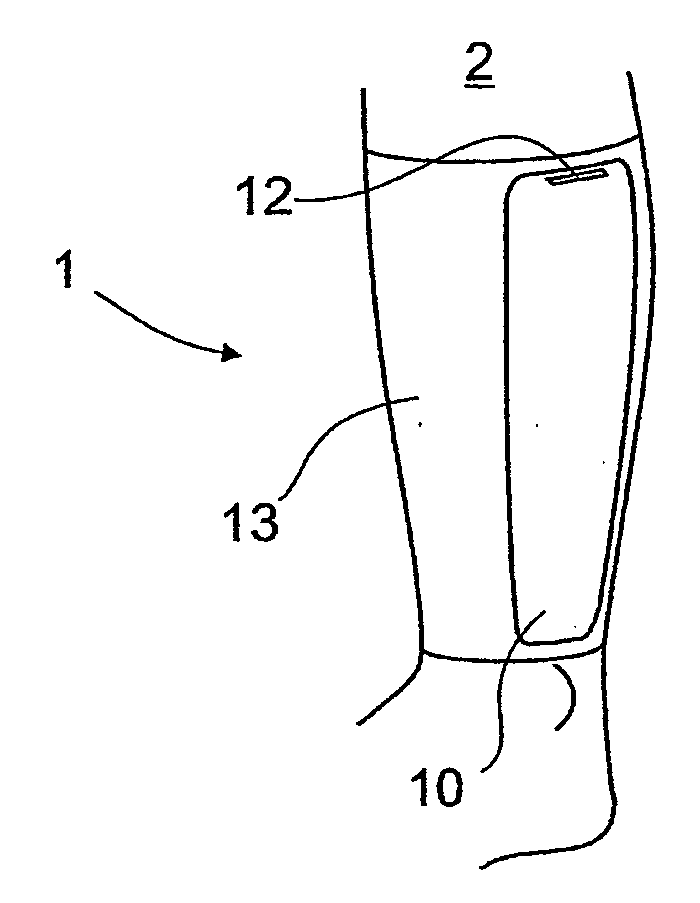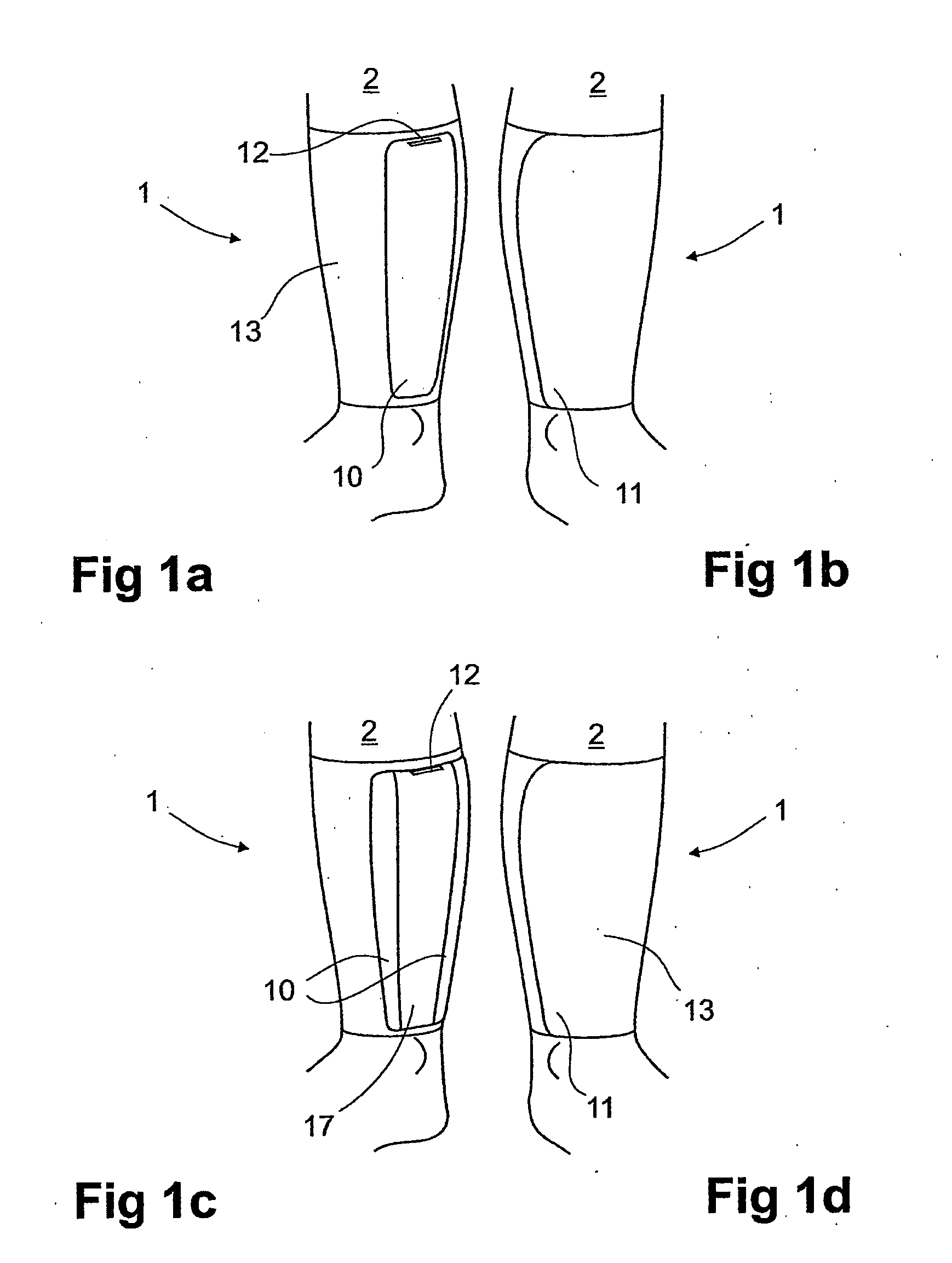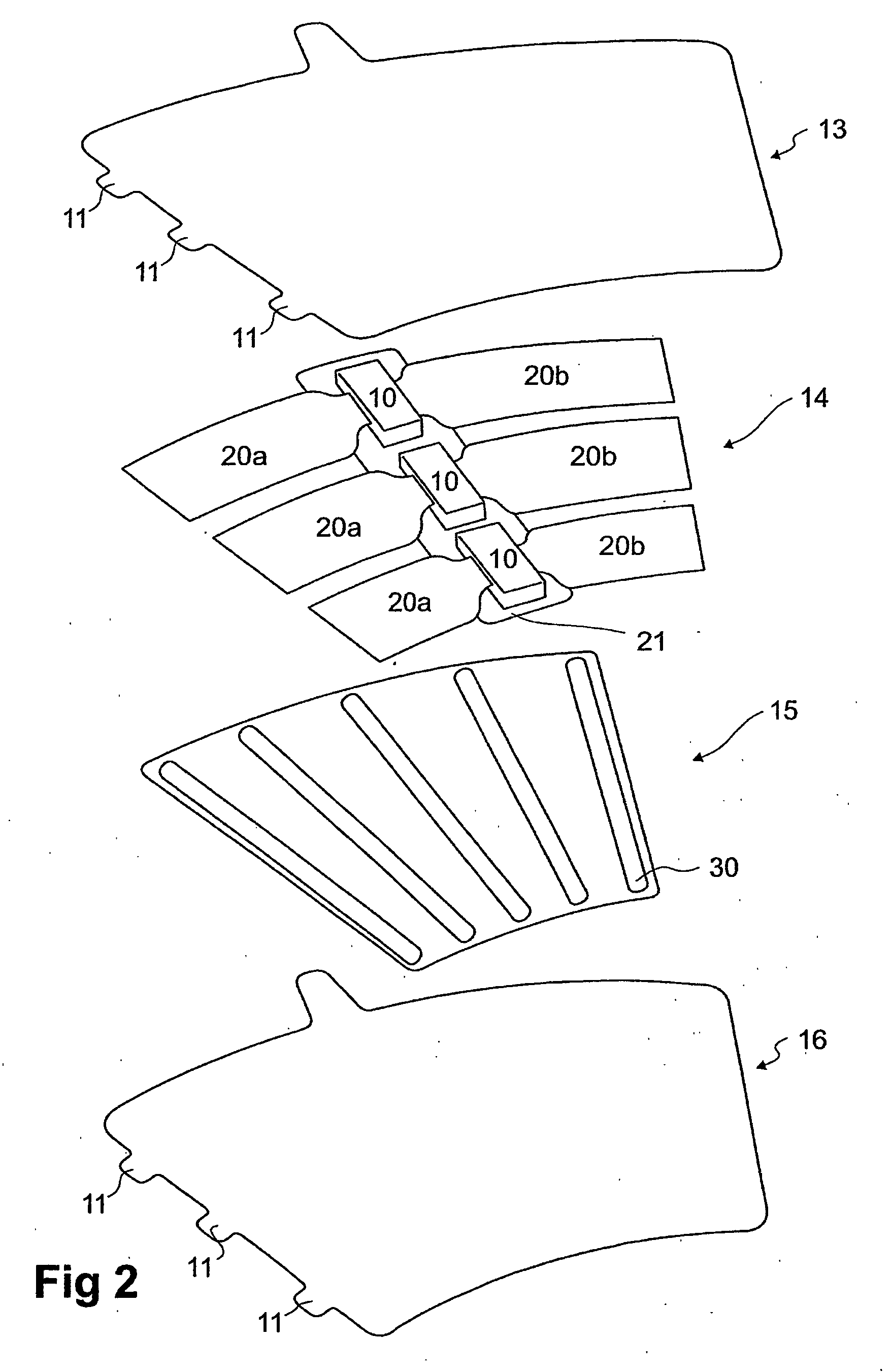Device, system and method for compression treatment of a body part
a body part and compression technology, applied in the field of body part compression treatment devices, can solve the problems of short battery life, affecting the operation of the device, and requiring a complex locking mechanism, and achieve the effect of increasing the force capacity of the actuation unit, eliminating or substantially reducing the engagement of the force transfer devi
- Summary
- Abstract
- Description
- Claims
- Application Information
AI Technical Summary
Benefits of technology
Problems solved by technology
Method used
Image
Examples
first embodiment
[0219]FIG. 3 is a schematic sectional view of an actuation unit 100 which may be arranged as indicated in FIGS. 1a-1d, 2 and 4. As a non-limiting example, this embodiment may be provided using a resonant active material multiple electroded bender. In such a device, recitfication may be achieved by a friction interface. The actuation unit 100 may extend in a direction perpendicular to the section, along the entire or part of the compression device 1.
[0220]The actuation unit 100 comprises a housing 107a, 107b, wherein a first part 107a of the housing holds a flexible substrate 102, on which an actuator 101 is arranged. The actuator has a gripping member 106 protruding from the actuator and towards the second part 107b of the housing. The second part of the housing holds a bias spring 103.
[0221]A movable member 120, which may be integrated with or connected to the compression member, is clamped between the bias spring 103 and the gripping member 106. The flexible substrate 102 may be ...
second embodiment
[0233]FIGS. 5a-5c schematically illustrate an actuation unit 200 in which a power transmission mechanism 208 is provided between a gripping member 206 and a spindle 209, upon which a compression member 220, or a connection member, connected to the compression member 220, is wound. The actuator of
[0234]FIGS. 5a-5c may use a resonant active material, such as piezoceramics, e.g. in the form of a multiple electroded stack or bulk material driven at a suitable resonant or anti-resonant frequency. FIG. 5a illustrates one half of the actuation unit 200, which may be symmetric about the line of symmetry L. The actuator 201 with the electrode sets 204, 205 and bias springs 203 may be provided in a housing 207, similar to the embodiment of FIG. 3.
[0235]However, instead of the gripping member 206 acting directly upon the compression member 220, the gripping member 206 acts upon a contact surface 210 of a wheel 208 or disc shaped structure. Hence, the wheel 208 forms a movable member. The cont...
third embodiment
[0241]FIGS. 6a and 6b schematically illustrate part of an actuation unit 300 the actuator of which can be provided by a resonant motion amplification mechanism utilizing multiple vibration modes or coupled vibration modes of a resonant horn or actuator.
[0242]In FIGS. 6a and 6b, the housing has been left out for clarity. A pair of actuators 301a, 301b, have been arranged with a respective fastening point 311 to a housing or frame of the actuation unit 300, and connected to an amplifying structure 312, which may be e.g. a micro-molded horn of metal or low acoustic loss polymer. The horn may have one or more further fastening points to the housing or frame of the actuation unit 300.
[0243]Furthermore, the amplifying structure 312 may be provided with a gripping member 306, which is to interact with a movable member 320, which may be the compression member or a connection member connected thereto. A bias spring 303 may be arranged between a fastening point 313 and the movable member 320...
PUM
 Login to View More
Login to View More Abstract
Description
Claims
Application Information
 Login to View More
Login to View More - R&D
- Intellectual Property
- Life Sciences
- Materials
- Tech Scout
- Unparalleled Data Quality
- Higher Quality Content
- 60% Fewer Hallucinations
Browse by: Latest US Patents, China's latest patents, Technical Efficacy Thesaurus, Application Domain, Technology Topic, Popular Technical Reports.
© 2025 PatSnap. All rights reserved.Legal|Privacy policy|Modern Slavery Act Transparency Statement|Sitemap|About US| Contact US: help@patsnap.com



